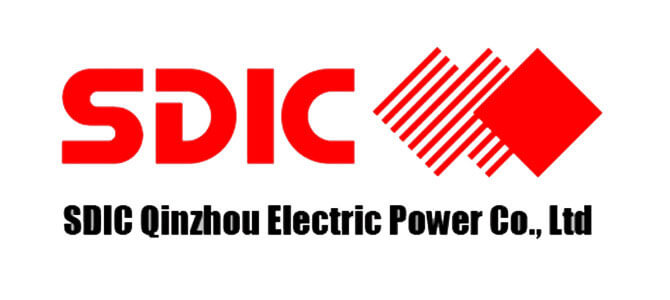What is Enterprise Asset Management (EAM)?
Enterprise asset management (EAM) is a mix of software, services and systems that helps you to make the most of equipment and assets, from machines to property and vehicles. Use it to track asset-related data, including maintenance and compliance; and combine it with enterprise resource planning (ERP) to take a strategic approach to your assets.
This comprehensive guide introduces you to EAM – answering questions such as:
- Why do I need EAM?
- What are the benefits of EAM?
- How can EAM support strategy?
- What’s the difference between EAM and CMMS?
- How do you select the right EAM?
EAM software can help a plant or facilities management team manage important key performance indicators, for instance by keeping the preventive-to-corrective maintenance ratio above 75 percent.
In practice, this means that for every three preventive maintenance tasks a maintenance team performs, they are only doing one corrective task.
This ratio indicates a proactive asset management program, better efficiency, and a better chance of achieving profitability.
Why do I need EAM?
By giving you visibility over assets and equipment, EAM helps you to make the most of your asset investments – by making better maintenance decisions, improving day-to-day efficiencies, and enhancing compliance. In the long run, it can help you take a strategic view of assets, often in combination with an ERP.
EAM does this by giving you visibility into the data you need to manage and maintain your assets – from the costs of material and labor required to maintain each asset, to vital information such as equipment type, location, production line, product group and age. Armed with this data, you can start making better decisions.
What are the benefits of EAM?
The benefits of EAM are that it can keep assets running reliably and efficiently; support health, safety and environmental (HSE) compliance; and enable asset-based decision-making at the right levels of your organization.
Keep assets up and running
The immediate point of EAM is to keep assets up and running efficiently. After all, if equipment is down or not properly optimized, that could reduce revenues, increase waste and negatively affect the customer experience.
By helping you manage the details of maintenance, EAM could help you reduce “turn time” for shutdowns or minimize stoppages due to part stockouts or labor shortages. And it could help you to increase productivity and capacity, while helping to minimize scrap rates and issues with product quality.
Improve health, safety and compliance
Health, safety and environmental (HSE) concerns are critical for every organization. Equipment failure could result in costly or even catastrophic damage to the equipment – which could involve risk of injury or death or release harmful materials into the environment.
Your EAM tracks the maintenance actions you have taken, including how your maintenance technicians are certified. By providing a “single source of truth” for the lifecycle of your assets, it enables compliance with ISO 5500 and PAS 55 standards, which require the entire asset lifecycle – design, operation, maintenance, decommission and replacement – to be managed on the same database.
Make everyday decisions
To help keep assets up and running, EAM helps you to support decision-making in a range of day-to-day scenarios, such as repair/replacement or asset prioritization.
For example:
- When an asset nears the end of its functional life, EAM can help you decide when to repair and when to replace it – whether it’s a piece of equipment such as a drill press or compressor, or a much larger asset such as a production line or a manufacturing plant, or even a portfolio of plants.
- As a component of ERP software, EAM can help you make decisions in their wider business context. So, for example, you could predict the benefits of a repair in terms of revenue or customer satisfaction; or decide whether to delay a maintenance shutdown if there are customer orders pending.
- When demand varies across geographies, an EAM can be useful in helping you to prioritize certain assets for maintenance, repair, expansion or replacement.
How can an EAM support your strategy?
In addition to supporting everyday decisions, your EAM can help you to deliver on high-level strategic goals, such as enabling proactive maintenance, supporting asset lifecycle management (ALM), or improving operational equipment effectiveness (OEE). In many cases, it can be combined with an ERP for greater operational value.
Move from reactive to proactive maintenance
An EAM can support you in your progression from reactive maintenance (fixing things after they break) to proactive maintenance (preventing things from breaking in the first place).
This could help you to keep the preventive-to-corrective maintenance ratio – an important KPI – above 75%. This would mean that for every three preventive maintenance tasks a maintenance team performs, it is only doing one corrective task. Such a metric would tend to indicate that you are being proactive in your maintenance, supporting efficiency and profitability.
Towards condition-based maintenance
Your EAM can support you as you develop your maintenance strategy – allowing you to use predictive criteria to plan your maintenance schedule proactively.
As a starting point, you might be using calendar-based maintenance – performing maintenance at given intervals. But as you advance, EAM can support your move to a criteria-based approach, using metrics that aim to reflect wear and tear – such as hours of run time, or number of duty cycles.
If you have access to diagnostic data, you can progress to condition-based maintenance – using values like temperature, vibration, pressure (or changes in values) to trigger maintenance at certain thresholds. Ultimately, a sound approach to predictive maintenance combines condition-based maintenance with, for example, duty cycle and load factors.
When EAM is a part of an overall ERP package, this is an optimum scenario – because you can not only use data such as equipment run time, but other relevant data related to products. After all, cutting stainless steel, for example, will result in more wear to equipment than cutting aluminium, so product data is highly relevant.
The goal is to eliminate unnecessary maintenance – not only to reduce cost but because many maintenance activities bring some risk of damaging the machine, which has an effect on uptime.
Support asset lifecycle management
Another strategic benefit of EAM is that it enables asset lifecycle management (ALM). This approach enables you to “map your future” by understanding how your assets help you to deliver current and future products, services, and revenue. You can then design assets to evolve and adapt to the needs you anticipate.
Maintenance can also be balanced, avoiding the extreme of over-maintenance, which increases cost without improving outcomes. As changes are made to the asset over time, these can be included in an “as-maintained” record.
Of course, at some point, despite optimal maintenance, the asset will degrade and the cycle will begin anew. But thanks to EAM, the planning and engineering team can begin their work with full visibility into maintenance and usage data from the previous asset – allowing them to learn from the experience of operating that asset, to improve the running of the new one.
Improve operational equipment effectiveness
In combination with an ERP, EAM can also help enhance another KPI: overall equipment effectiveness (OEE). The idea is to combine EAM data and ERP data with equipment performance data, collected either from individual machines or a supervisory control and data acquisition (SCADA) system – to determine how to maximize the output of a machine.
OEE measures manufacturing productivity as a percentage of manufacturing time which is truly productive. Ideally, a manufacturing company would have 100% good parts with no stop time, maximum equipment operating speed, and 100% availability – but this is unattainable for many reasons. The idea is to find an optimal balance.
As part of this effort, EAM data can also be used to track and record stoppages – which can be achieved manually or through automated data capture through the internet of things (IoT). Other EAM processes which play a part include the availability of replacement parts and maintenance personnel. In some cases, operational factors in ERP play a role too, including data about available inventory or raw materials.
What’s the difference between an EAM and a CMMS?
An EAM is different from a computerized maintenance management system (CMMS) in that it includes capabilities for inventory management, finance, and even human resources (HR) – helping to support your wider strategy.
Indeed, EAM solutions can even function as a complete enterprise resource planning (ERP) software system for asset-intensive organizations that wholly rely on their equipment or capital/fixed assets to generate revenue.
How do you select the right EAM?
When it comes to selecting EAM software, it’s important to be disciplined – and identify your business needs not only now, but into the future. By taking time to consider whether an EAM meets your future needs, you increase your chances of making the right decision.
As a first step, make sure your project has an executive sponsor – not only so that funding is readily available, but also so that end users know how to understand your EAM when it is implemented.
In strictly functional terms, EAM is straightforward and most users will be clear about how they want to use it: they want to be able to execute work orders, using various devices, as they stand at a machine. But the more strategic elements set EAM software products apart. Here are some questions to ask which may help guide your selection:
- How does the EAM support each stage of the asset lifecycle?
- How well does the EAM support larger enterprise projects – including engineering, construction or fabrication, plant shutdowns, lifecycle extensions and refits?
- Does the software support maintenance contracting? Can it, for instance, automate bid letting and contract management?
- How well does the EAM support OEE?
Finally, ask yourself how the EAM itself evolves in the future. Does the software vendor have a roadmap of how the software will be extended and improved over time? By doing this, you can help predict whether the EAM can meet your future needs.







